General Website Setup - Brilliant Directories
Bookmarks
Mastering Website General Settings
This guide provides a comprehensive walkthrough of configuring your website's general settings through the admin area. It covers six main tabs: General, Brand Images, Social Media, Localization, Search Settings, and Integrations. Each section details the specific settings available, such as enabling GDPR for EU compliance, customizing brand images, linking social media profiles, setting localization preferences, configuring search parameters, and managing integrations like Google Analytics. The guide also includes tips for navigating the admin area efficiently.
Introduction to Website General Settings
In this section, we will explore the general settings of your website. These settings are crucial as they lay the foundation for how your website operates and interacts with users. Proper configuration ensures that your site functions smoothly and meets your specific needs.
We'll also provide a brief introduction to navigating the admin area, which is essential for managing these settings effectively.
Navigating the Admin Area
Navigating the admin area of your website is essential for managing various settings and configurations. This guide will help you understand how to access and utilize the admin area effectively.
Accessing the Admin Area
To begin, log in to your website's admin area. Once logged in, you will see a dashboard similar to the one shown in the image below. This dashboard provides access to all the tools and settings you need to manage your website.

Locating the Settings Menu
On the left-hand side of the dashboard, you will find a menu. Navigate to Settings and then select General Settings. This is where you can configure the basic settings of your website.
These settings can be found in your website's admin area by navigating to settings and general settings in the left hand menu.
Overview of the Six Main Tabs
Within the General Settings, there are six main tabs that you can explore. Each tab contains specific settings that allow you to customize different aspects of your website. Familiarizing yourself with these tabs will enable you to manage your site more efficiently.
Configuring General Settings
In this section, we will explore how to configure the general settings of your website. These settings are crucial for establishing the basic identity and functionality of your site.
In this first general tab are some of the most basic settings that you'll wanna configure for your website.
Overview of the General Tab
The General tab is the starting point for setting up your website's core information. Here, you can manage essential details such as the website name, contact information, and more.
Setting Website Name, Phone Number, and Email
- Website Name: Enter the name of your website as you want it to appear to visitors.
- Phone Number: Provide a contact number for users to reach you.
- Default Email Address: Set the primary email address for communications and notifications.
Enabling GDPR Settings for EU Compliance
If your website operates within the EU or collects data from EU users, enabling GDPR settings is vital. This feature adds consent fields to forms like registration, member upgrades, and newsletter sign-ups, ensuring compliance with data protection regulations.
Configuring Industry and Profession Names
These fields allow you to specify the industry and profession related to your website. The text entered here will appear in various areas on the front end, helping to tailor the user experience.

Customizing Brand Images
Customizing brand images on your website is a crucial step in establishing a strong and recognizable online presence. This guide will walk you through the process of adding and customizing various brand images, including logos, favicons, member photos, and more.
In here, you can add your own brand images for the website, such as your website logo, favicon, some default member photos.
Adding Brand Images Like Logos and Favicons
To begin, navigate to the brand images tab in your website's admin area. Here, you can upload your website logo and favicon. These elements are essential for brand recognition and will appear in the browser tab and bookmarks.
Customizing Member Photos and Badges
If you wish to personalize the experience for your members, consider adding default member photos and specific badges, such as a verified member badge. This not only enhances the user experience but also adds a layer of authenticity and trust to your site.
Setting Email Template Logos and Map Icons
Another important aspect of brand customization is setting the logo for your website's email templates. This ensures that all communications are consistent with your brand identity. Additionally, you can customize the pin drop icon displayed on live Google Maps on your website, further reinforcing your brand's visual identity.
By following these steps, you can effectively customize your brand images, ensuring a cohesive and professional appearance across all aspects of your website.
Linking Social Media Profiles
Linking your social media profiles to your website is a straightforward process that enhances connectivity and engagement. Here's how you can do it:
"Here's where you can enter the URLs for your various social media profiles, such as Facebook, Twitter, Instagram, YouTube, and more."
Entering Social Media URLs
- Access the Social Media Tab: Navigate to the social media section in your website's admin area.
- Copy and Paste URLs: For each social media platform you wish to link, copy the URL of your profile and paste it into the corresponding field.
Displaying Social Media Icons
- Once the URLs are entered, icons for each platform will appear on your website.
- You can choose to display these icons in the header or footer of your site.
- Clicking on these icons will direct visitors to your social media profiles.
Enhancing Website Connectivity
By linking your social media profiles, you provide visitors with easy access to your social media presence, fostering better engagement and interaction.

Setting Localization Preferences
We have several settings relating to the location of your website.
In this section, we will guide you through the process of setting localization preferences for your website. These settings are crucial for ensuring that your website aligns with the geographical and cultural context of your target audience.
Configuring Primary Country and Time Zone
To begin, you can set your website's primary country and time zone. This is essential for providing accurate information to your users and ensuring that time-sensitive content is displayed correctly.
Setting Date Formats and Language
Next, you can choose the format in which dates will be displayed on your website. Additionally, you can set the language of your website, which is important for various integrations such as Google Maps and reCAPTCHA.
Choosing Distance Units and Currency Settings
You also have the option to select the unit of measurement for distances, which can be particularly useful for businesses that operate internationally. Furthermore, you can configure important currency settings, including the default website currency and the currency number format.
By carefully setting these localization preferences, you can enhance the user experience and ensure that your website meets the needs of a diverse audience.
Adjusting Search Settings
In this section, we will explore how to adjust the search settings on your website to enhance user experience and search efficiency.
"This is where we can configure the settings for searches that are conducted on your website."
Customizing Member Search URL
You have the option to customize the default member search URL. This allows you to tailor the search experience to better fit your website's needs and branding.
Setting Search Radius and Strictness
You can define the default search radius for location-based searches. Additionally, you can decide whether these searches should be strict matches or more flexible, allowing users to see a broader range of results.
Enhancing Search Result Visibility
Choose whether to display only members who have fully completed their profiles in the search results. This can help ensure that users find the most relevant and complete information.

Managing Integrations
When managing integrations on your website, it's crucial to ensure that your live domain is connected. This connection is necessary for enabling standard integrations such as Google Analytics, Google Maps, and spam protection. These tools require the domain to be properly linked to your website to function effectively.
It's important to keep in mind that these settings are reliant on the live domain being connected to your website.
Setting Up Google Analytics and Maps
- Connect Your Domain: Ensure your domain is live and connected to your website.
- Access Integrations Tab: Navigate to the integrations tab in your admin area.
- Enable Google Analytics: Follow the prompts to link your Google Analytics account.
- Set Up Google Maps: Enter your Google Maps API key to enable map functionalities.
Enabling Spam Protection
- Verify Domain Connection: Double-check that your domain is connected.
- Activate Spam Protection: Use the integrations tab to enable spam protection features.

Efficient Admin Area Navigation Tips
Navigating the admin area efficiently can save you time and effort. Here are some tips to help you find specific settings quickly:
Using Keyword Search for Settings
If you're looking for a specific setting but can't seem to find it navigating through these tabs, you can always use the keyword search here in the top right-hand corner.
Example of Searching for Specific Settings
For example, if you type in "radius" and go to the search settings tab, you can see all the settings related to "radius."
Tips for Efficient Navigation
- Utilize the Search Bar: Make use of the search bar to quickly locate settings without manually browsing through each tab.
- Familiarize with Tabs: Spend some time getting to know the layout and categories of the admin area to improve your navigation speed.
- Bookmark Frequently Used Pages: If there are settings you access regularly, consider bookmarking them for quicker access.

Conclusion and Support
In this guide, we have explored various aspects of configuring your website's general settings. From navigating the admin area to customizing brand images and linking social media profiles, each step is crucial for optimizing your website's functionality and appearance. We also covered setting localization preferences, adjusting search settings, and managing integrations to ensure a seamless user experience.
If you have any questions or need further assistance, please feel free to reach out. Our team is always ready to help and support you.
If you have questions, please reach out at any time. Our team is always happy to help and support you.




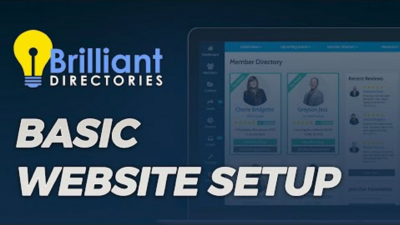
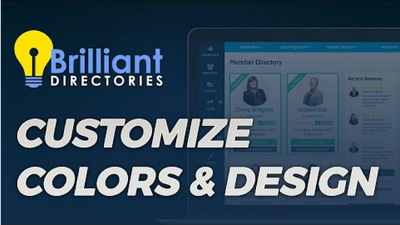
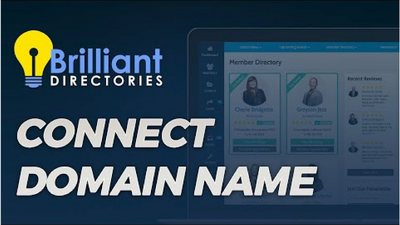


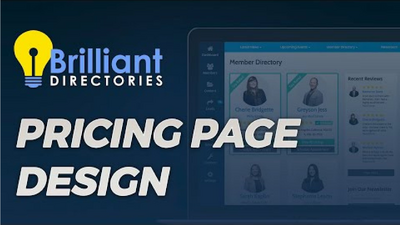

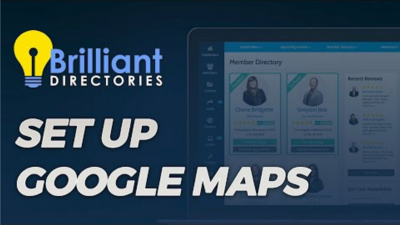




































![035. Profile Page Cover Photo [Members Dashboard] - Webinar Wednesday 35 - Guide for Directory](https://img.simplerousercontent.net/scaled_image/12904111/2bf80714eced574a28671acfc76cad7b252590a0/maxresdefault-34-768x432-400w-225h.jpg)








![044. Creating On-Site Visitor Actions [Online Marketing] - Webinar Wednesday 44- Directory Soft](https://img.simplerousercontent.net/scaled_image/12904073/0983fd510f623380c28bdb4c4646fa97fbeebe82/WW-Thumbnail-768x432-400w-225h.png)










![055. Results from Optimizing Homepage SEO for Google [Part 2] - Webinar Wednesday 55 - Director](https://img.simplerousercontent.net/scaled_image/12904007/f880371dcfc5dce1b6a654d872df4cf8813c625d/WW-Thumbnail-768x432-2--400w-225h.png)















![071. [New] Profile Cover Photo Update - Webinar Wednesday 71 - Training Workshop for Directory](https://img.simplerousercontent.net/scaled_image/12903905/0473ae19c3bb676a9ac24a967f043a5bff278416/WW71-Thumbnail-768x432-400w-225h.jpg)





![077. Limit Page Visibility [Sell Digital Downloads Add-on] - Webinar Wednesday 77 - Brilliant D](https://img.simplerousercontent.net/scaled_image/12903888/30f5386f3b07fe2d1fdd3801369fd02163938d88/WW77-Thumbnail-768x432-400w-225h.jpg)


































































































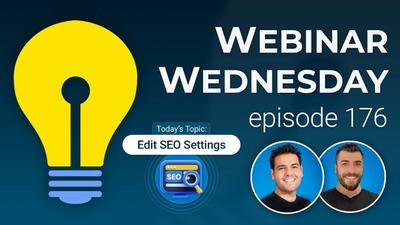














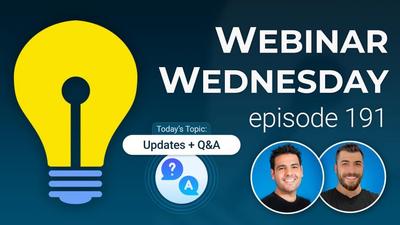
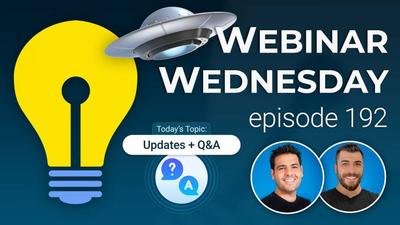




Comments